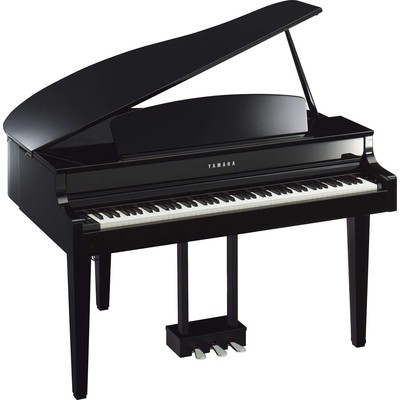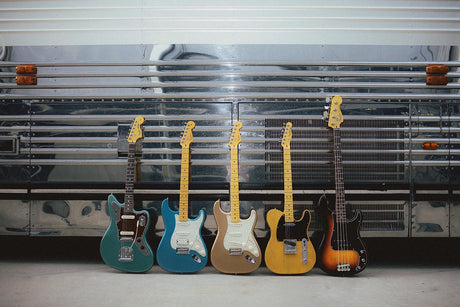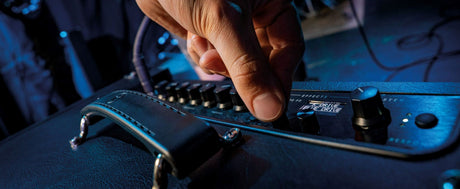With so many different digital piano models available from various brands, it’s easy to get lost and wonder what the difference is between them all. We’re frequently asked, “which digital piano brand is best?” to which, there is no firm answer as it’s based on preference. However, each brand has unique features exclusive to them that might help your decision a bit easier.
Of course, if this article doesn’t answer all of the questions you have, just contact us! It’s also worth mentioning that some digital pianos include free home installation. This means that one of our experienced in-house piano delivery teams will deliver and install it into your property free of charge, and we’ll even take away the packaging.
Depending on which model you opt for, you’ll likely have a slightly different piano sound. The Yamaha YDP143 and YDP163 sample the CFIIIS concert grand. From the CLP625 upwards, they sample the Yamaha CFX concert grand – one of the finest pianos in the world. They also sample the Bosendorfer Imperial, so you’ve got two world class piano sounds to choose from. Of course, all Yamaha Clavinovas have more sounds to choose from. If you want a piano that boasts an enormous array of sounds and features, look at the Yamaha CVP range.
Yamaha use their expertise in creating keyboards for acoustic pianos when they design their digital instruments. Starting at Graded Hammer Standard, then moving to Graded Hammer 3X, then going up to the Natural Wood X action, all Yamaha digital pianos have a great feel. The higher up the range you go, the more it feels like an acoustic piano – as the NWX’s name suggests, it uses real wood so that the keys feel more like they do on an acoustic piano. The for CLP600 series, Yamaha introduced their newest and most authentic keyboard action to date – GrandTouch. The incredible GrandTouch action features on the CLP675 and CLP685.
Roland also have a unique sound engine – SuperNATURAL. In a nutshell, SuperNATURAL enables the Roland digital pianos to respond more like an acoustic, so each note has a unique tonal characteristic, as well as pitch. Note velocities are also smooth to give better dynamic response and how the sound decays is more natural. To read a more in depth explanation of Roland’s SuperNATURAL, click here.
Roland’s Progressive Hammer Action (PHA) gives you the feel of an acoustic piano – particularly the most recent incarnation – PHA50. This utilises both wood and modern materials so you get a traditional feel as well as improved durability. Roland offer a huge range, from high quality beginner stage pianos like the FP-30 all the way up to the GP607 digital grand piano.
Kawai use their own Harmonic Imaging technology to ensure you get a great response when playing. Each note on the keyboard can give you up to 128 different tonal options, depending on how hard you press the key down. This combined with their Responsive Hammer keyboard action allows you to play with incredible expression. Again, there’s the full range of instruments from stage pianos to larger cabinets like the CS and CA series. The below video showcasing the new Kawai CN27 and CN37 highlights some their unique features.
Casio offer really good value for money, with their entry level portable stage piano – the Casio CDP130 coming in at under £300. Around the £400-600 mark they also have some great sounding and playing pianos. More recently however, Casio have released a brand new digital piano that has been designed with one of the biggest acoustic piano brands – Bechstein. The Casio Grand Hybrid pianos use wooden keys and real hammers so that you get a truly authentic feel. They’ve also sampled three of the best European acoustic grand pianos for a classic sound.
Conclusion
What the pianos offer in terms of features vary from model to model. You can also pick your piano in terms of portability or how it looks. All brands offer stage pianos that are easier to transport, as well as the more traditional designs. Also if space is an issue, look at some of the more compact slimline pianos. If you’re still puzzled as to which model to go for then please don’t hesitate to contact us – we can find the right piano to match your needs.









